Noncommissioned personnel have systematic uniforms just like officers. Although they do not wear rank plaques, some visible rank distinction is necessary. Lack of officer rank badges means that the substantive insignia of non-commissioned officers, crewmen and troops must be comprised of the more general elements of uniform. Several distinctions are known, but what they designate is not yet certain.
Stormtroopers, the marines of the Galactic Empire, usually do not wear outward marks of enlisted rank. Officers may have standard inter-service rank plaques attached to the chestplate, but the officer system does not cover enlisted insignia. Stormtroopers are identified to each other by electronic means, and rank and identity may be indicated in their tracking and sight enhancement systems incorporated in the helmet goggles. On occasions when troops interact with civilians, for instance during policing duties, they wear coloured pauldrons to indicate rank. These are described in a dedicated stormtrooper insignia page.
Combat-trained naval crewman and guards wear black cockroach helmets These helmets appear to have a visor which is normally shuttered up above the forehead but presumably can be lowered to offer some protection. These helmets are not vacuum-tight. Some versions have a communications microphone attached; these are most often used by guards stationed at computer console duty posts. It seems that NCOs don't use these helmets; they always have cloth caps.
Some naval guards and controllers have white-silver Imperial emblems at each shoulder; others do not. The same goes for black-suited personnel wearing cloth caps. The men with emblems outnumber those without. When Lord Vader arrived at the Death Star II, the controller who spoke to the shuttle crew was without emblems. His three fellows had emblems. These observations all hint that possession of the emblem may denote slightly lower rank, if it is meaningful at all. Alternatively, it may be a non-substantive decoration indicating veterans from previous major conflicts. (A problem with this theory is the fact that the traffic controllers with emblems seem quite young. They probably weren't in service long enough to experience earlier wars.) The emblems might mark those who enlisted through political youth organisations, like SAGroup. Still, there are so few potential rank cues that the shoulder patches are probably needed as part of the non-commissioned insignia.
The design of jackets worn by enlisted personnel also varies. Some have double-breasted jackets resembling those of officers. Others have what seems to be a kind of black overall that closes in the middle in a single-breasted fashion. All of the single-breasted uniforms seen so far have shoulder emblems, and none of them have belt boxes.
Often there are a number of rectangular metallic boxes on the belt, in addition to the basic buckle. The extra boxes resemble the units on Chewbacca's bandolier, and they may be blaster power cells. The number of these units on a belt varies: four, two or none. Therefore they may be be a simple indicator of rank. Subofficers and crewmen of higher rank (tacitly indicated by their duties in the films) tend to have more belt boxes. Alternatively, they may play a dual role, as both elements of insignia and practical devices. It is possible that four boxes indicates a chief petty officer or warrant officer, two indicates a lower NCO like a petty officer, sergeant or corporal, and crewmen, troops and spacemen have no boxes.
Unlike the forces of many nations on Earth, Imperial enlisted personnel do not have any obvious insignia to indicate duty specilisations. Many of the known uniforms are functionally distinct, such as those of the gunners and naval troops, but servicemen in many other roles are not finely distinguished. For instance only cap colour provides visual division between naval crewmen and technical specialists, and no further sub-distinctions are apparent. At this time it is unknown whether this is a sign of ascetic modesty in the Imperial uniform design, or else indicative of a real and deliberate lack of specialisation in the Imperial Forces.
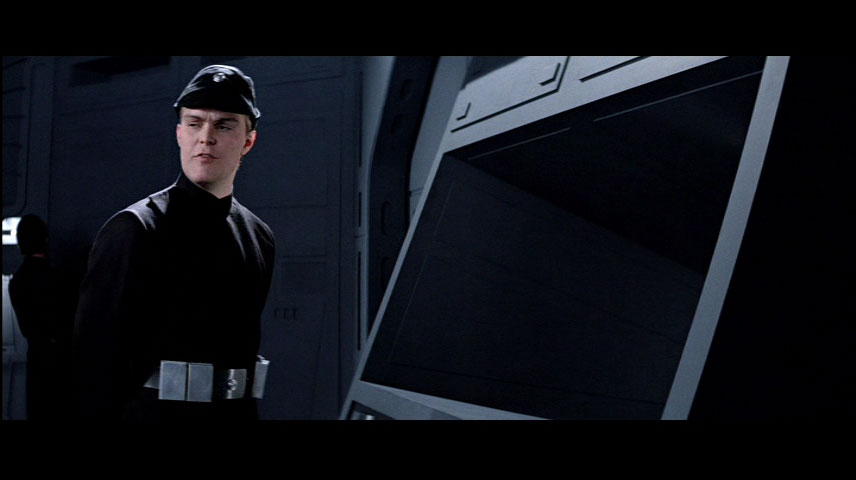
Naval NCO - Chief Petty Officer:

Naval NCO - Chief Petty Officer:
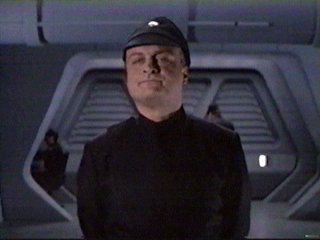
Naval NCO - Petty Officer:
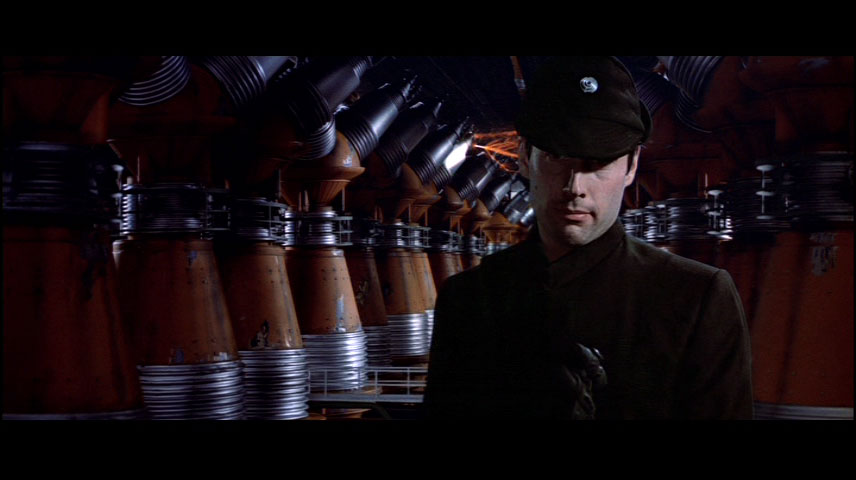
Stormtrooper or naval NCO?
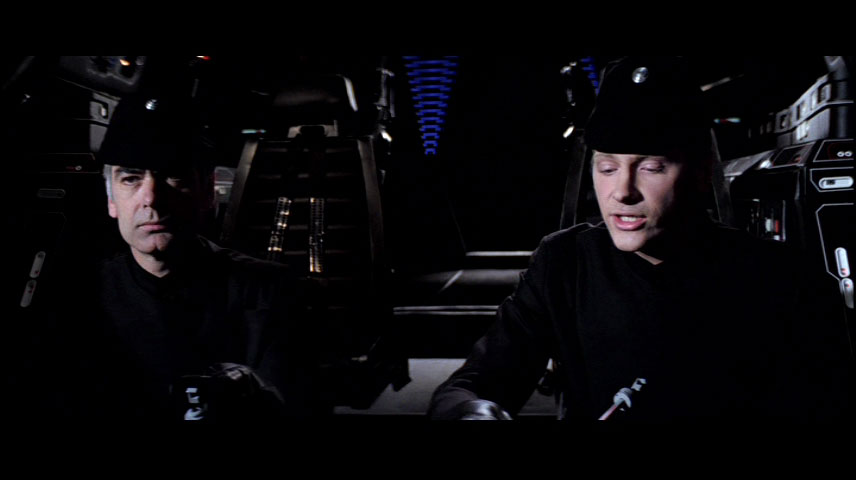
Naval shuttle pilots:
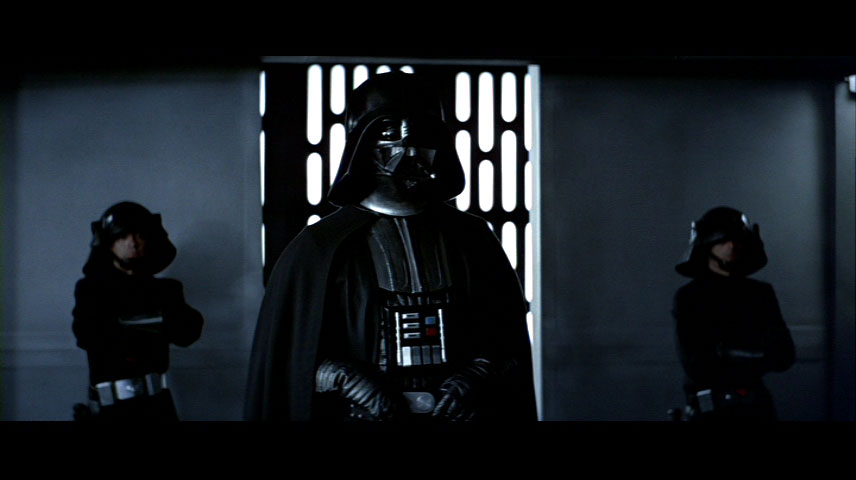
Naval guards - command security:
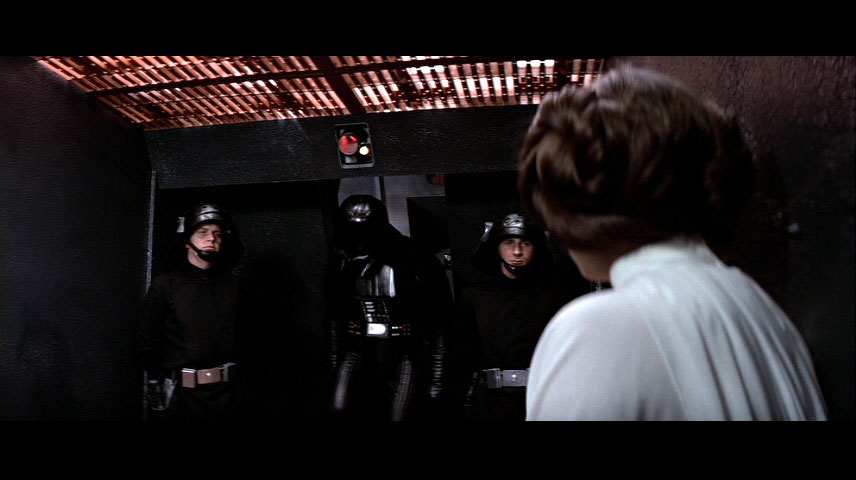
Naval guards - detention security, interrogation:

Naval/stormtrooper NCO:
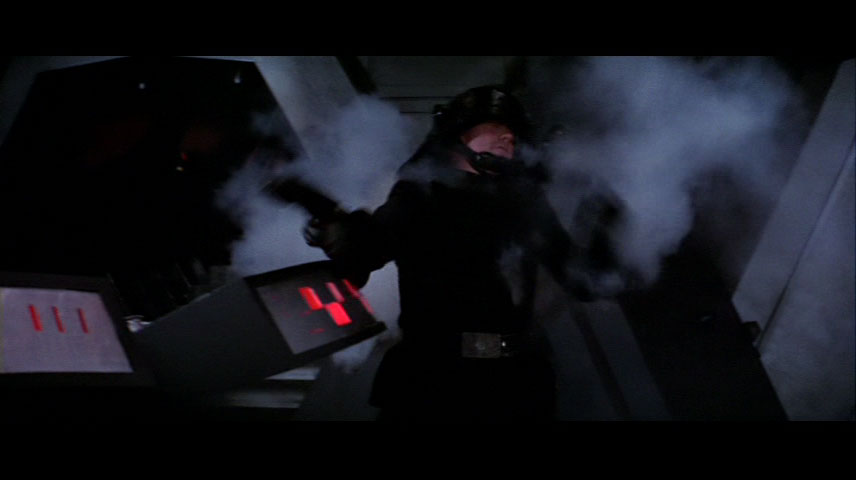
Naval guards - detention security:
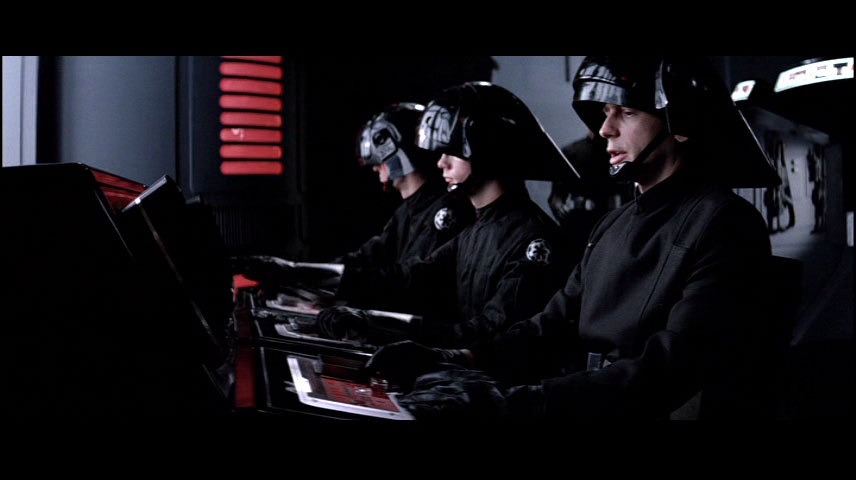
Naval guards - traffic operations:
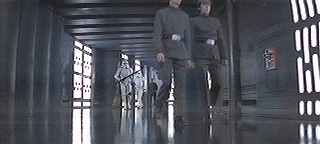
Enlisted personnel - Army?
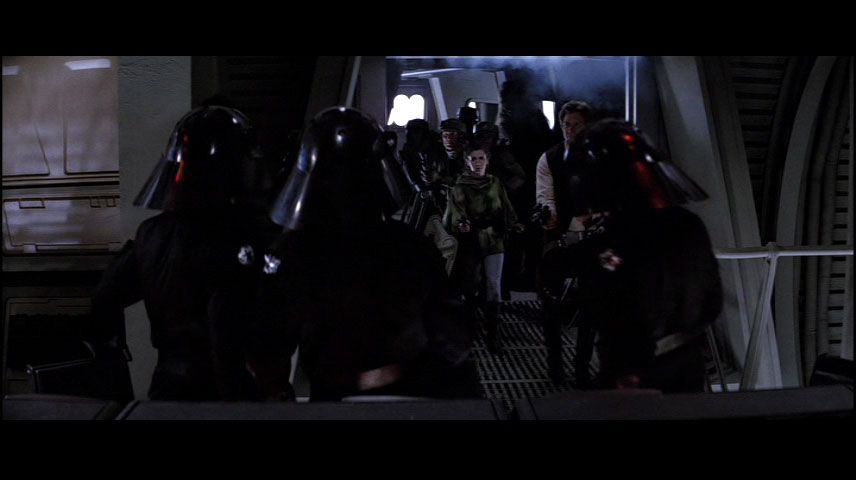
Naval guards - bunker operations:
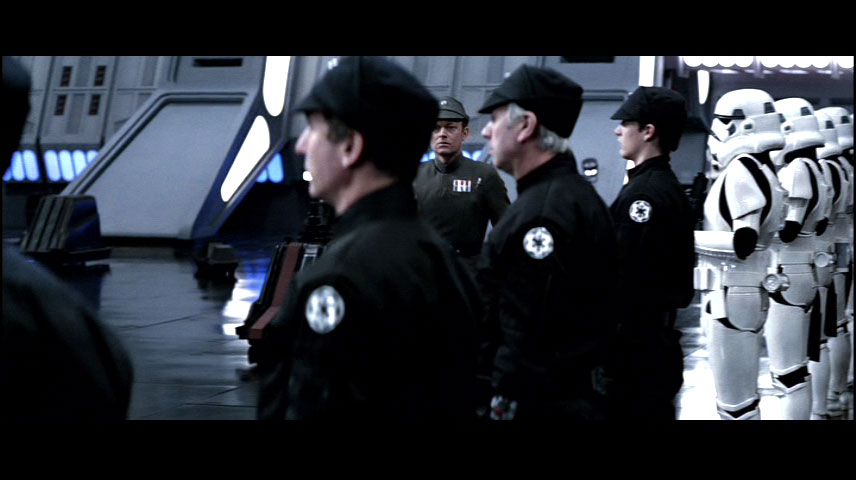
Pilot or gunnery crew? (uncertain):
These men may be pilots, gunners or another kind of specialist. It is even possible that they may be a kind of officer rather than noncommissioned personnel. Refer to Imperial Military Uniforms for further discussion. Their uniforms seem identical to those of naval gunners or TIE pilots, except that the helmets and armour are removed and replaced by semi-dress uniform caps. E.Moody reports inspecting one of the uniforms at close range, and reports that they have pilot comlinks on the left sleeve (white, ROTJ; silver ANH).
If it is a semi-dress uniform for pilots then it seems to contradict the representation of the pilot officer deck uniforms in the TIE Fighter computer games and X-Wing comics, which portray olive uniforms similar to those of navy and army officers. Alternatively, this may be a semi-casual uniform for pilots on standy duty, or it may be for support personnel in a related service.
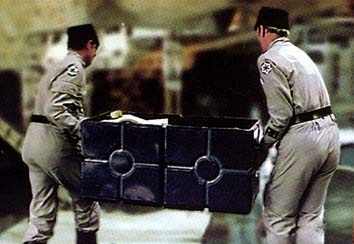
Naval crewmen - specialist:
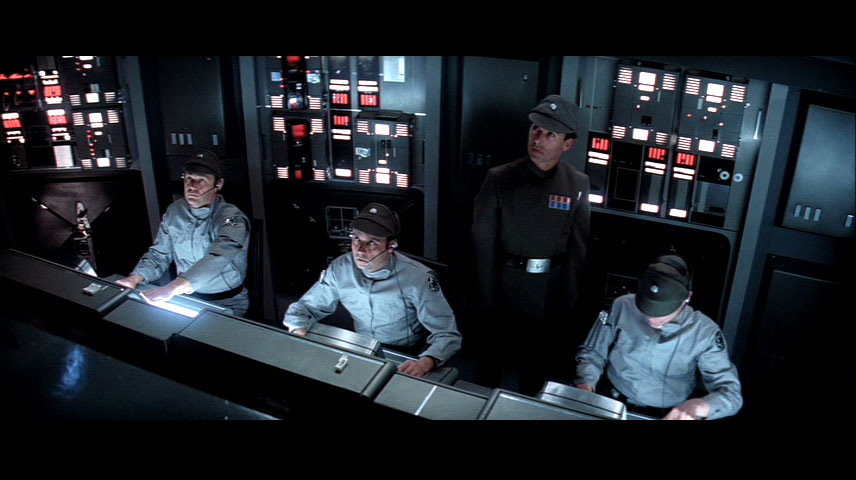
Naval crewmen - generic:
The structure and conventions of non-commissioned ranks in the English language seem more complex and less standardised than officer ranks. The number of exceptions to the rules is exacerbated by the large number of divergent rank terms invented by the USA. However, on closer inspection most of these terms resolve as job distinctions within or equivalent to the international English rank terms.
The following table summarises the common military rank titles for non-commissioned personnel. A more complte table, with officers added, is found on the dedicated Nomenclature page. All commissioned officers are senior to all non-commissioned ranks. Ranks from the international conventions are printed in white text; additional and equivalent ranks in USA terminology are in grey text. Both international English and American rank terms have been used in the STAR WARS literature, often interchangeably. Since the STAR WARS story is told as a translated history from "a long time ago in a galaxy far far away", both forms should be treated as translated expressions of a unified galactic system.
Several of the terms have been modified so that they become more appropriate for the setting of a galactic civilisation. The main problem with Earth's military rank terms is that many of the naval and air force terms refer to sea or air, whereas most naval and fighter activity in STAR WARS occurs far from planetary surfaces. "Airman" becomes "Spaceman" and "Aircraftsman" becomes "Spacecraftsman". "Seaman" becomes "Crewman" or "Deckman". "Crewman" is the term used for enlisted naval personnel in some references, but "deckman" is the term used in The Imperial Sourcebook [p.21]. They're probably synonymous, or else one may be a subset of the other. Perhaps one term connotes non-combat role, while the other includes naval guards as well.
NAVY ARMY FIGHTER Fleet Chief Petty Off. Warrant Officer I Warrant Officer = Warrant Officer = Chief Master Sgt. Master Chief Petty Off. Army Sgt.Major Chief Master Sgt. = Command Sgt.Major = Sergeant Major Senior Chief Petty Off. 1st Sergeant Senior Master Sgt. = Master Sgt. Chief Petty Officer Warrant Officer II Master Sergeant = Sergeant I - Staff Corporal Flight Sergeant Petty Officer I Staff Sergeant Chief Technician = Technical Sergeant Petty Officer II Sergeant Staff Sergeant Leading Crewman Corporal Corporal = Petty Officer III - - Junior Technician - - Senior Spacecraftsman = Senior Spaceman Able Crewman Lance Corporal Leading Spacecraftsman = Crewman = Private I = Spaceman I Ordinary Crewman Private Spacecraftsman = Crewman Apprentice = Spaceman Crewman Recruit Private Spaceman Basic = Junior Crewman |
|---|
The lowest ranks (Crewman Recruit = Junior Crewman, Private, Spaceman Basic) are used for enlisted personnel still in training.
In the army, privates and lance corporals are the basic troops. A sergeant commands a squad. A staff sergeant is often assigned to a platoon; Sergeants first class and master sergeants are assigned to platoons. A first sergeant is assigned to a company, although the pay grade is the same as master sergeant. A sergeant major works at battalion level; and command sergeant major is assigned to a battalion or brigade. A staff sergeant major or army sergeant major is assigned to an army headquarters; they are at the same pay grade. All NCOs above sergeant first class can be treated as warrant officers.
Fleet Chief Petty Officer, Master Chief Petty Officer, Senior Chief Petty Officer and Chief Petty Officer are addressed as "Chief Petty Officer" or "Mr/Ms". Petty Officers of all classes are addressed as "Petty Officer". Crewmen are addressed according to actual rank title.
In the army, Warrant Officers of all classes are addressed as "Warrant Officer", and other enlisted ranks are addressed according to their literal rank title. Terms for the lowest enlisted personnel vary is some specialised units. A private in an armoured unit is a "Trooper", a "Gunner" in artillery units, a "Signalman" in signals, or "Musician" in a military band. In artillery units a Corporal is called a "Bombardier", and a Lance Corporal is a "Lance Bombardier".
Chief Master Sergeants are addressed as "Chief". Staff Sergeant, Technical Sergeant, Master Sergeant, and Senior Master Sergeant are addressed as "Sergeant". Spaceman Basic, Spaceman, Spaceman First Class and Senior Spaceman are addressed as "Spaceman" or "Spacecraftsman".